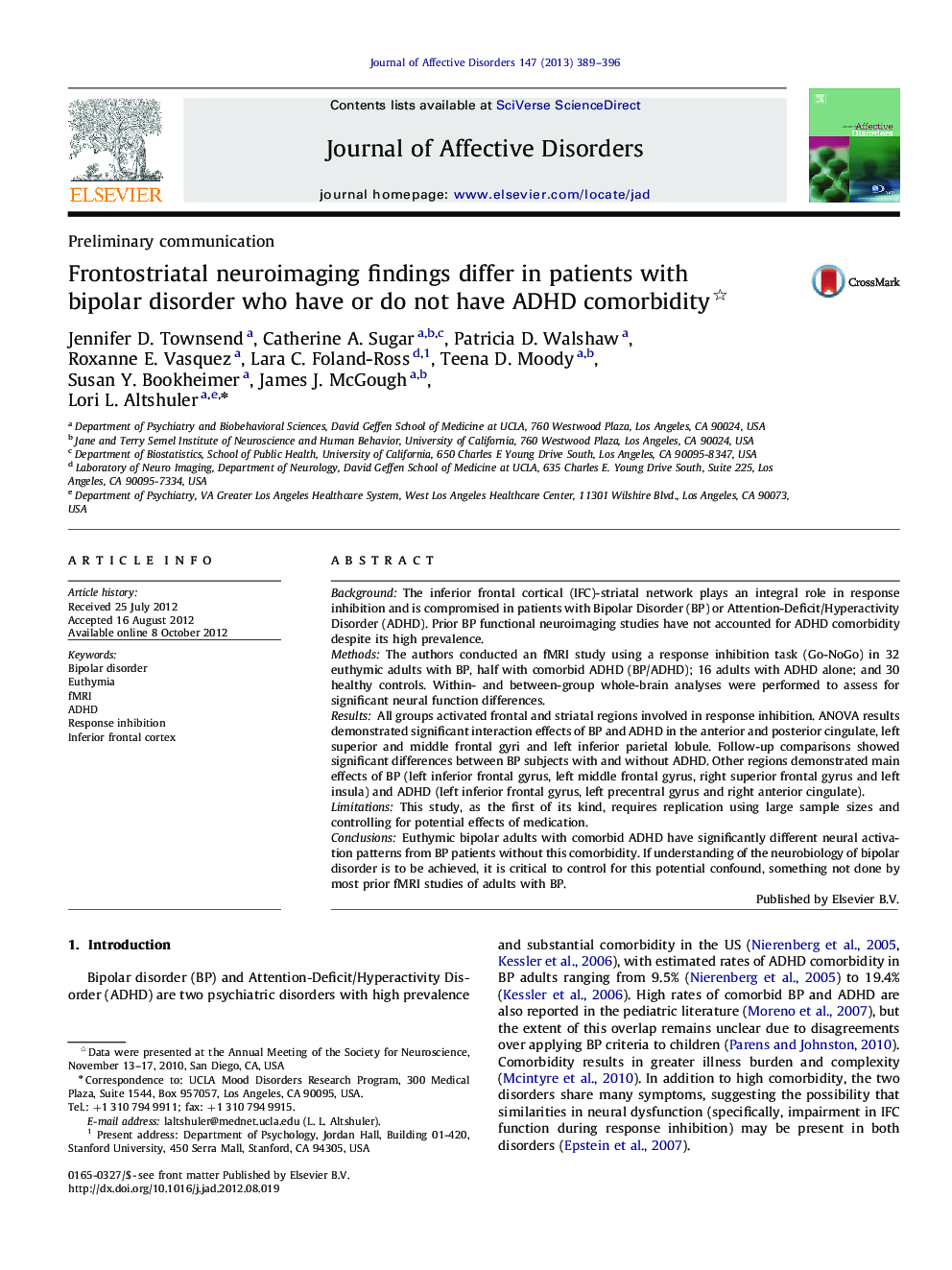| Article ID | Journal | Published Year | Pages | File Type |
|---|---|---|---|---|
| 6234850 | Journal of Affective Disorders | 2013 | 8 Pages |
BackgroundThe inferior frontal cortical (IFC)-striatal network plays an integral role in response inhibition and is compromised in patients with Bipolar Disorder (BP) or Attention-Deficit/Hyperactivity Disorder (ADHD). Prior BP functional neuroimaging studies have not accounted for ADHD comorbidity despite its high prevalence.MethodsThe authors conducted an fMRI study using a response inhibition task (Go-NoGo) in 32 euthymic adults with BP, half with comorbid ADHD (BP/ADHD); 16 adults with ADHD alone; and 30 healthy controls. Within- and between-group whole-brain analyses were performed to assess for significant neural function differences.ResultsAll groups activated frontal and striatal regions involved in response inhibition. ANOVA results demonstrated significant interaction effects of BP and ADHD in the anterior and posterior cingulate, left superior and middle frontal gyri and left inferior parietal lobule. Follow-up comparisons showed significant differences between BP subjects with and without ADHD. Other regions demonstrated main effects of BP (left inferior frontal gyrus, left middle frontal gyrus, right superior frontal gyrus and left insula) and ADHD (left inferior frontal gyrus, left precentral gyrus and right anterior cingulate).LimitationsThis study, as the first of its kind, requires replication using large sample sizes and controlling for potential effects of medication.ConclusionsEuthymic bipolar adults with comorbid ADHD have significantly different neural activation patterns from BP patients without this comorbidity. If understanding of the neurobiology of bipolar disorder is to be achieved, it is critical to control for this potential confound, something not done by most prior fMRI studies of adults with BP.
